Lower Limb Exoskeleton Gait Planning Based on Crutch and Human-Machine Foot Combined Center of Pressure
Abstract
1. Introduction
2. Materials and Methods
2.1. Exoskeleton
2.2. Foot and Crutch Ground Reaction Force (GRF) Measurements
2.2.1. Foot GRF Measurement
2.2.2. Crutch GRF Measurement
2.3. Combined CoP and Stride Length Calculation
- (1)
- The stride length of a subject walking in an exoskeleton is mostly between 600 to 1200 mm based on trials with nominal reference gait [22];
- (2)
- The relationship between the combined CoP and the desired stride length is linear;
- (3)
- is bounded within [−500, 0] mm when it is located in the negative Y-axis. We did a pre-test for a total of 100 steps on 5 healthy subjects, and the was always within [−500, 200] mm.
2.4. Forward and Inverse Kinematic Modeling
2.5. Gait Planning Algorithm Simulation
2.6. Online Gait Planning Walking
3. Experiment
3.1. Stride Length Mapping Function Verification Test
3.2. Online Gait Planning Algorithm-Based Walking Test
3.3. Balanced Walking Verification Test
4. Results and Discussion
5. Conclusions
Author Contributions
Funding
Acknowledgments
Conflicts of Interest
References
- Biering-Sørensen, F.; Bickenbach, J.E.; El Masry, W.S.; Officer, A.; Von Groote, P.M. ISCoS–WHO collaboration. International Perspectives of Spinal Cord Injury (IPSCI) report. Spinal Cord 2011, 49, 679–683. [Google Scholar] [CrossRef] [PubMed]
- Kawamoto, H.; Kamibayashi, K.; Nakata, Y.; Yamawaki, K.; Ariyasu, R.; Sankai, Y.; Sakane, M.; Eguchi, K.; Ochiai, N. Pilot study of locomotion improvement using hybrid assistive limb in chronic stroke patients. BMC Neurol. 2013, 13, 141. [Google Scholar] [CrossRef] [PubMed]
- Nilsson, A.; Vreede, K.S.; Häglund, V.; Kawamoto, H.; Sankai, Y.; Borg, J. Gait training early after stroke with a new exoskeleton—The hybrid assistive limb: A study of safety and feasibility. J. Neuroeng. Rehabil. 2014, 11, 92. [Google Scholar] [CrossRef] [PubMed]
- Zhang, J.-F.; Dong, Y.-M.; Yang, C.-J.; Geng, Y.; Chen, Y.; Yang, Y. 5-Link model based gait trajectory adaption control strategies of the gait rehabilitation exoskeleton for post-stroke patients. Mechatronics 2010, 20, 368–376. [Google Scholar] [CrossRef]
- Fineberg, D.B.; Asselin, P.; Harel, N.Y.; Agranova-Breyter, I.; Kornfeld, S.D.; Bauman, W.A.; Spungen, A.M. Vertical ground reaction force-based analysis of powered exoskeleton-assisted walking in persons with motor-complete paraplegia. J. Spinal Cord Med. 2013, 36, 313–321. [Google Scholar] [CrossRef]
- Husain, S.; Ramanujam, A.; Momeni, K.; Garbarini, E.; Augustine, J.; Forrest, G. Effects of Exoskeleton Training Intervention on Net Loading Force Profile for SCI: A Case Study. Arch. Phys. Med. Rehabil. 2017, 98, e62–e63. [Google Scholar] [CrossRef]
- Jung, J.; Jang, I.; Riener, R.; Park, H. Walking intent detection algorithm for paraplegic patients using a robotic exoskeleton walking assistant with crutches. Int. J. Control Autom. Syst. 2012, 10, 954–962. [Google Scholar] [CrossRef]
- Raab, K.; Krakow, K.; Tripp, F.; Jung, M. Effects of training with the ReWalk exoskeleton on quality of life in incomplete spinal cord injury: A single case study. Spinal Cord Ser. Cases 2016, 2, 15025. [Google Scholar] [CrossRef]
- Watanabe, H.; Marushima, A.; Kawamoto, H.; Kadone, H.; Ueno, T.; Shimizu, Y.; Endo, A.; Hada, Y.; Saotome, K.; Abe, T.; et al. Intensive Gait Treatment Using a Robot Suit Hybrid Assistive Limb in Acute Spinal Cord Infarction: Report of Two Cases. J. Spinal Cord Med. 2017, 42, 395–401. [Google Scholar] [CrossRef]
- Bach Baunsgaard, C.; Vig Nissen, U.; Katrin Brust, A.; Frotzler, A.; Ribeill, C.; Kalke, Y.-B.; León, N.; Gómez, B.; Samuelsson, K.; Antepohl, W.; et al. Gait training after spinal cord injury: Safety, feasibility and gait function following 8 weeks of training with the exoskeletons from Ekso Bionics article. Spinal Cord 2018, 56, 106–116. [Google Scholar] [CrossRef]
- Suzuki, K.; Mito, G.; Kawamoto, H.; Hasegawa, Y.; Sankai, Y. Intention-based walking support for paraplegia patients with Robot Suit HAL. Adv. Robot. 2007, 21, 1441–1469. [Google Scholar] [CrossRef]
- Neuhaus, P.; Noorden, J.H.; Craig, T.J.; Torres, T.; Kirschbaum, J.; E Pratt, J. Design and evaluation of Mina: A robotic orthosis for paraplegics. IEEE Trans. Neural Syst. Rehabil. Eng. 2011, 2011, 5975468. [Google Scholar]
- Wang, S.S.; Wang, L.L.; Meijneke, C.C.; Van Asseldonk, E.E.; Hoellinger, T.; Cheron, G.; Ivanenko, Y.Y.; La Scaleia, V.V.; Sylos-Labini, F.; Molinari, M.M.; et al. Design and Control of the MINDWALKER Exoskeleton. IEEE Trans. Neural Syst. Rehabil. Eng. 2015, 23, 277–286. [Google Scholar] [CrossRef] [PubMed]
- Jeon, H.; Kim, S.L.; Kim, S.; Lee, D. Fast Wearable Sensor–Based Foot–Ground Contact Phase Classification Using a Convolutional Neural Network with Sliding-Window Label Overlapping. Sensors 2020, 20, 4996. [Google Scholar] [CrossRef] [PubMed]
- Leal-Junior, A.G.; Avellar, L.; Jaimes, J.; Diaz, C.A.R.; Dos Santos, W.M.; Siqueira, A.A.G.; Pontes, M.J.; Marques, C.; Neto, A.F.F. Polymer Optical Fiber-Based Integrated Instrumentation in a Robot-Assisted Rehabilitation Smart Environment: A Proof of Concept. Sensors 2020, 20, 3199. [Google Scholar] [CrossRef] [PubMed]
- Jung, J.H.; Veneman, J.F. Real time computation of Centroidal Momentum while human walking in the lower limbs rehabilitation exoskeleton: Preliminary trials. In Proceedings of the 2019 IEEE 16th International Conference on Rehabilitation Robotics (ICORR), Toronto, ON, Canada, 24–28 June 2019; pp. 721–726. [Google Scholar]
- Aphiratsakun, N.; Parnichkun, M. Balancing control of leg exoskeleton using zmp-based jacobian compensation. Int. J. Robot. Autom. 2010, 25, 359–371. [Google Scholar] [CrossRef]
- Kim, J.-H.; Han, J.W.; Kim, D.Y.; Baek, Y.S. Design of a Walking Assistance Lower Limb Exoskeleton for Paraplegic Patients and Hardware Validation Using CoP. Int. J. Adv. Robot. Syst. 2013, 10, 113. [Google Scholar] [CrossRef]
- Chen, B.; Zhong, C.-H.; Zhao, X.; Ma, H.; Qin, L.; Liao, W.-H. Reference Joint Trajectories Generation of CUHK-EXO Exoskeleton for System Balance in Walking Assistance. IEEE Access 2019, 7, 33809–33821. [Google Scholar] [CrossRef]
- Deng, M.-Y.; Ma, Z.-Y.; Wang, Y.-N.; Wang, H.-S.; Zhao, Y.-B.; Wei, Q.-X.; Yang, W.; Yang, C. Fall preventive gait trajectory planning of a lower limb rehabilitation exoskeleton based on capture point theory. Front. Inf. Technol. Electron. Eng. 2019, 20, 1322–1330. [Google Scholar] [CrossRef]
- Mendoza-Crespo, R.; Torricelli, D.; Huegel, J.C.; Gordillo, J.L.; Pons, J.L.; Soto, R. An Adaptable Human-Like Gait Pattern Generator Derived From a Lower Limb Exoskeleton. Front. Robot. AI 2019, 6, 6. [Google Scholar] [CrossRef]
- Kirtley, C. Clinical Gait Analysis. IEEE Eng. Med. Biol. Mag. 2013, 7, 35–40. [Google Scholar]
- Craig, J.J. Introduction to Robotics: Mechanics and Control; Pearson/Prentice Hall: New York City, NY, USA, 2005. [Google Scholar]


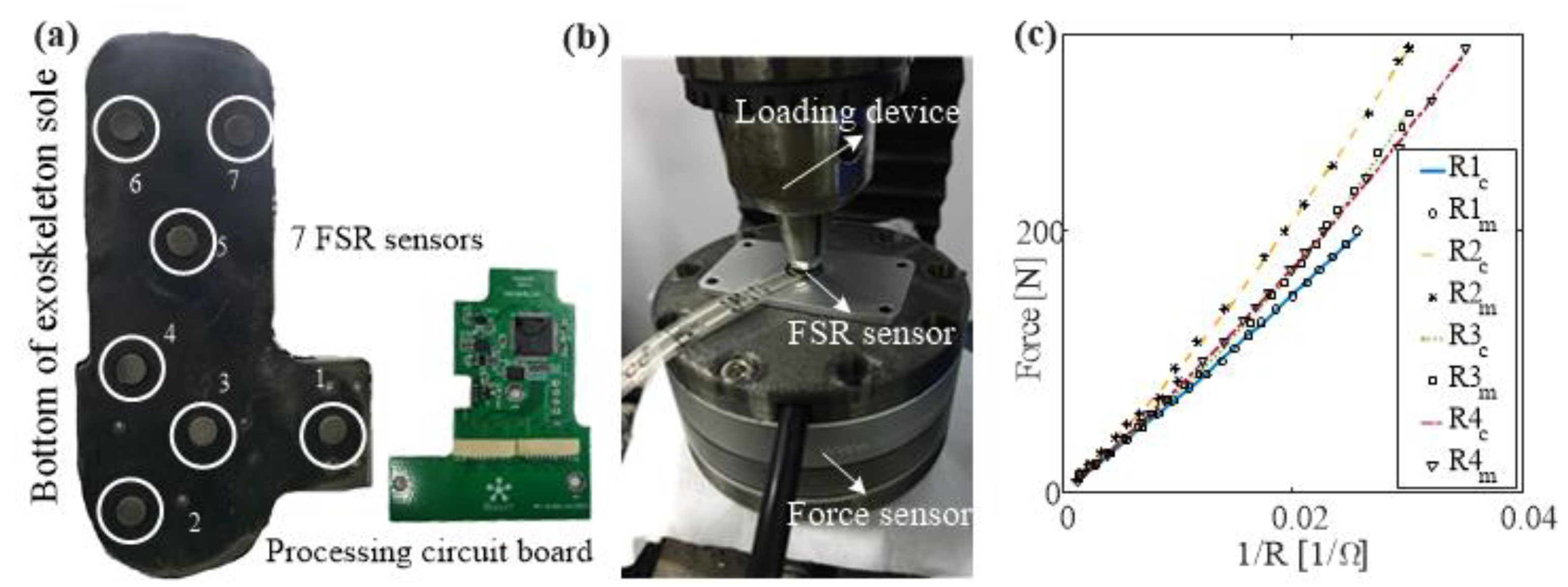
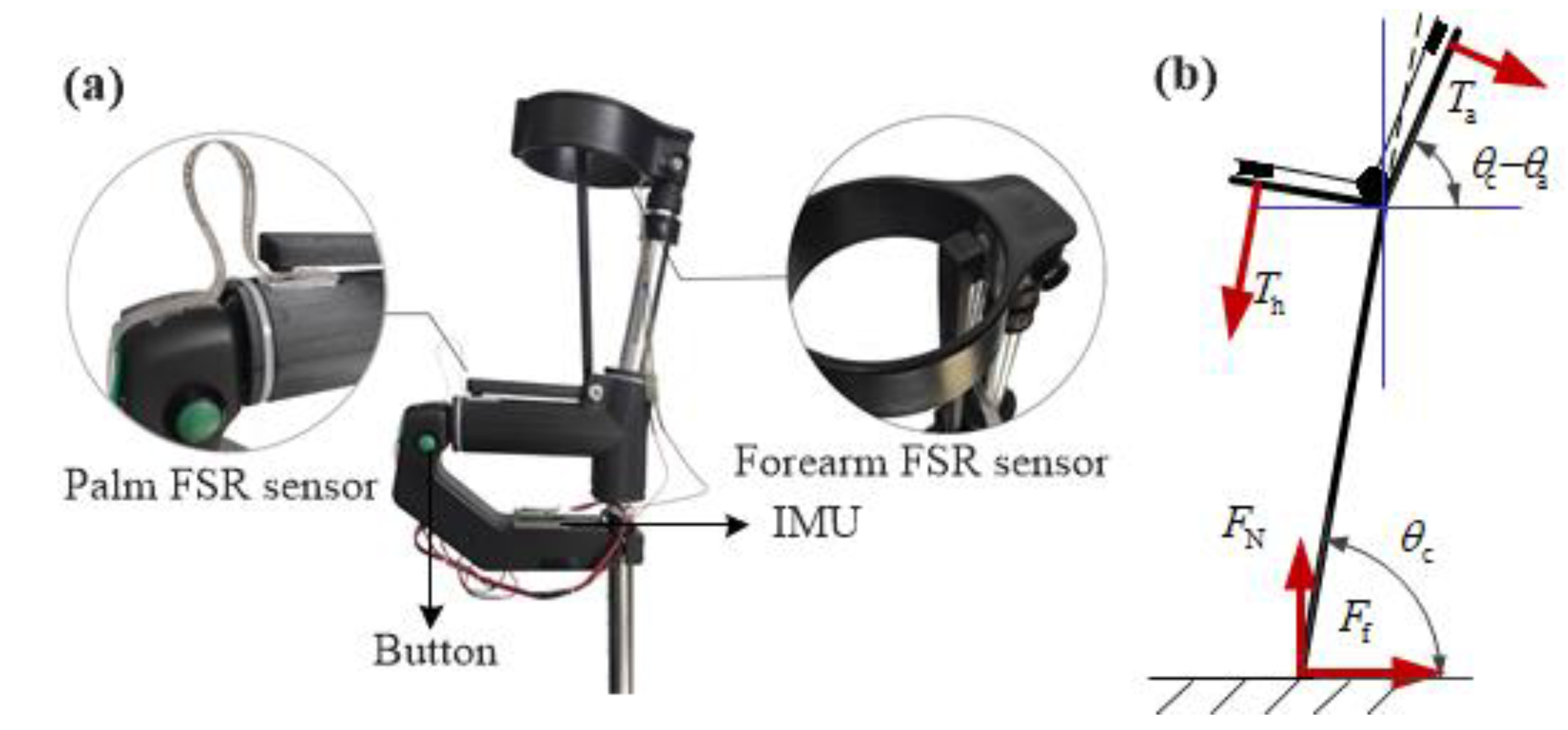
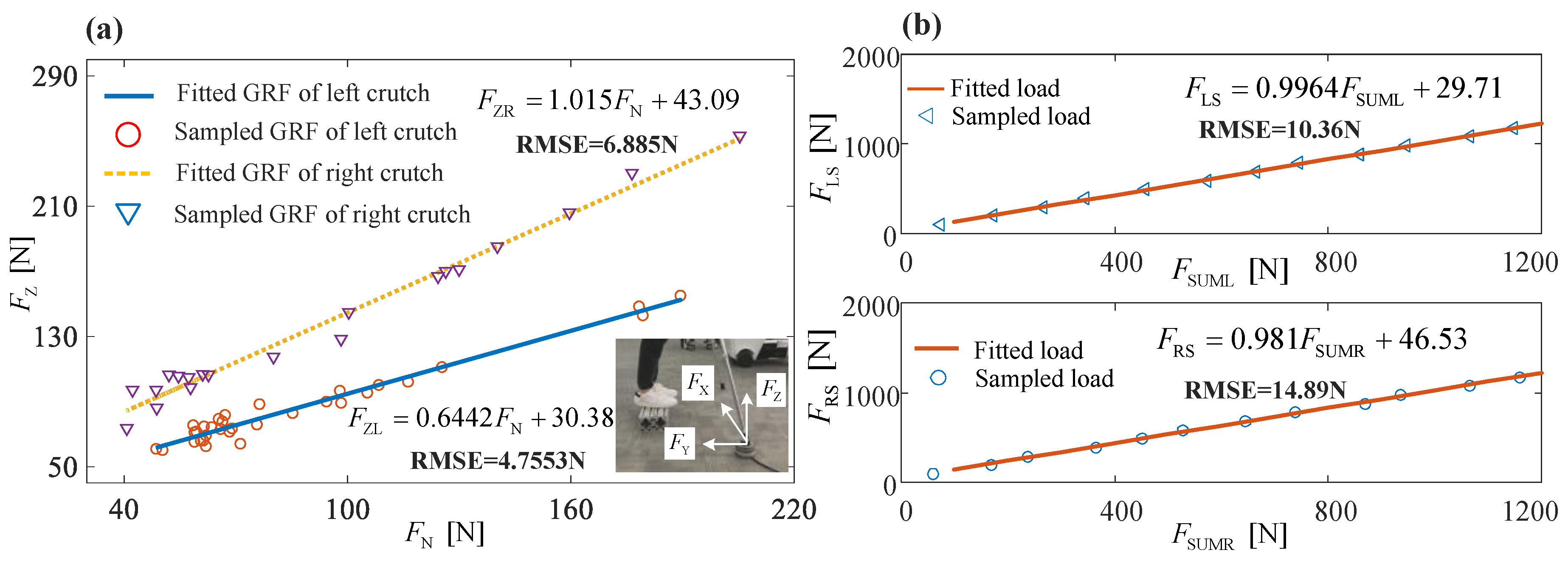
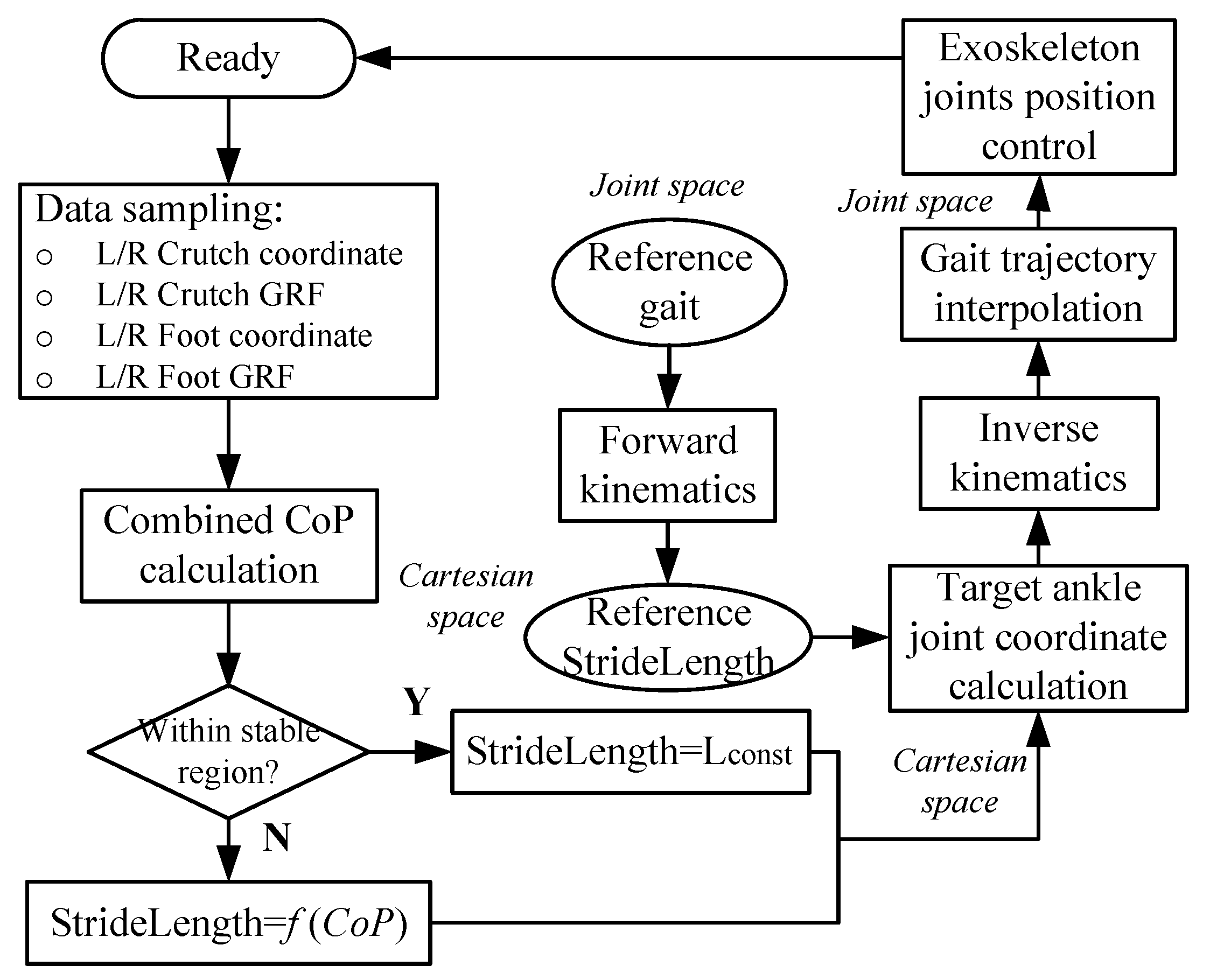
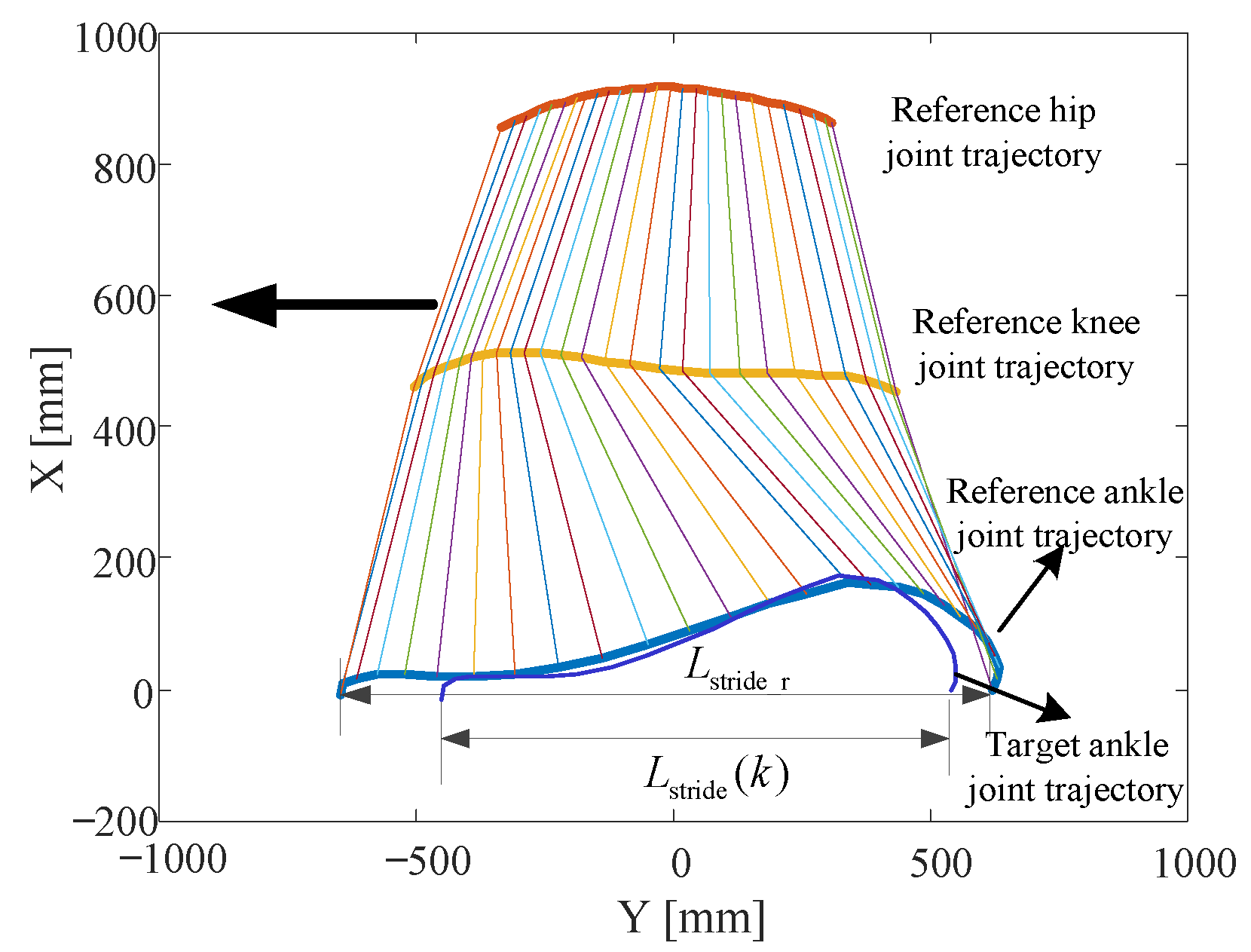

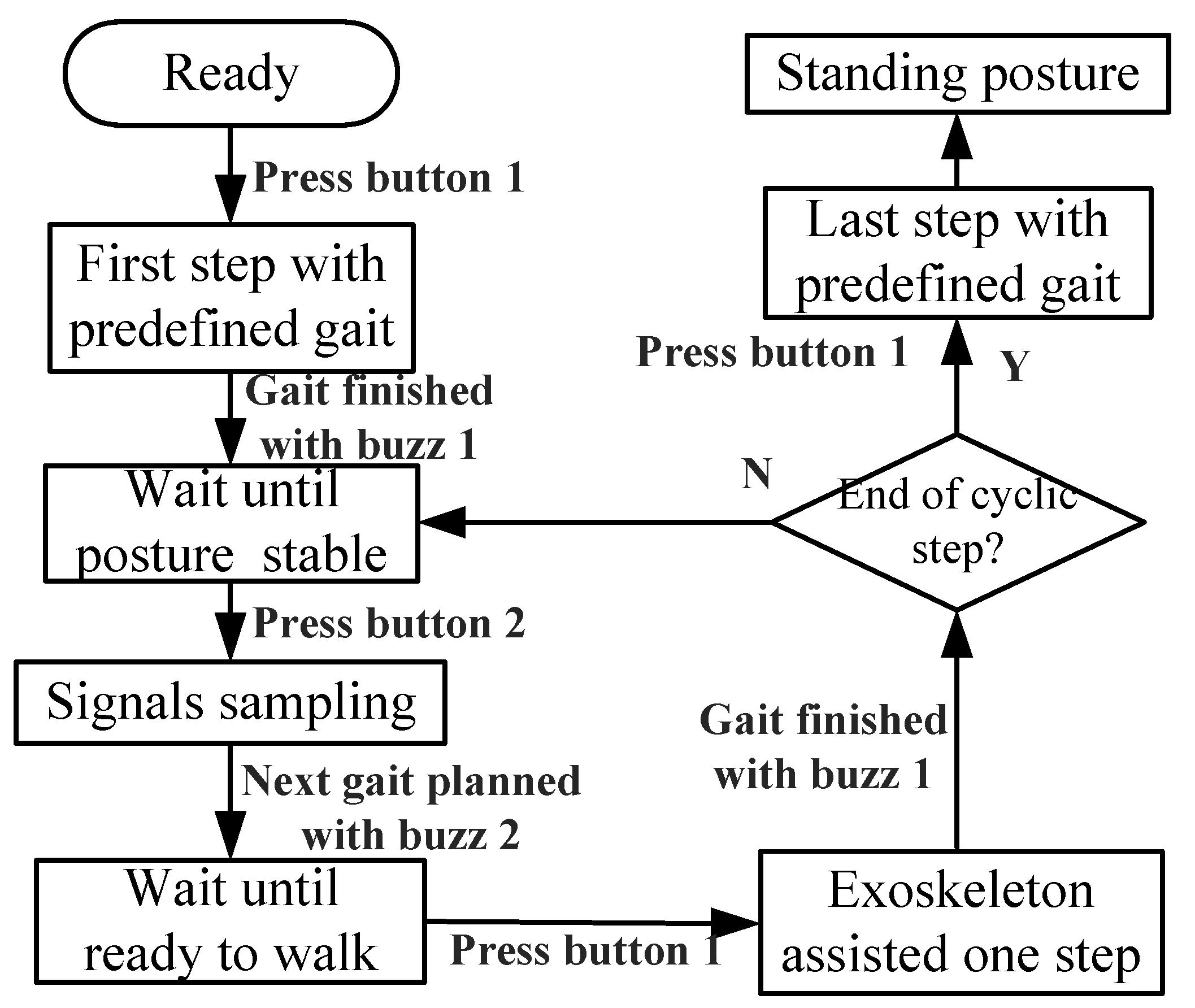

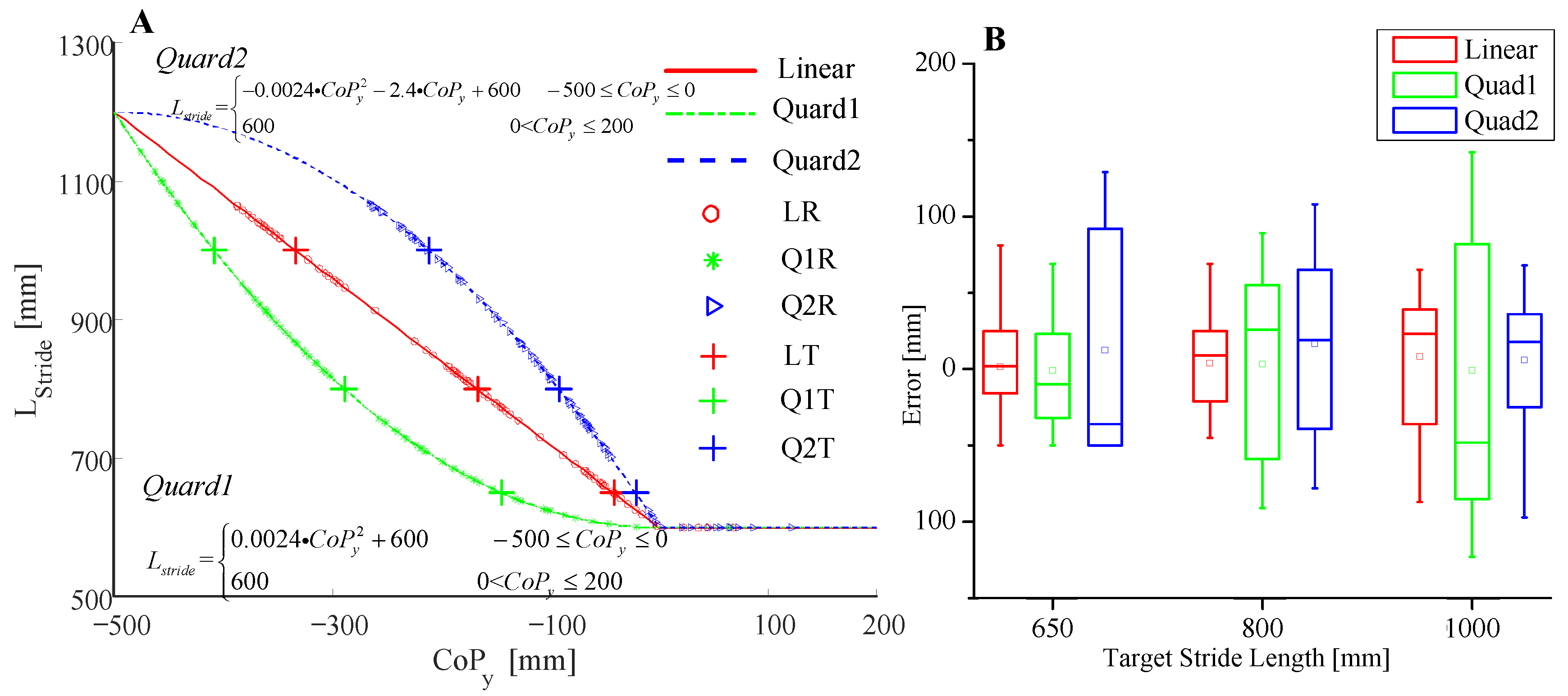

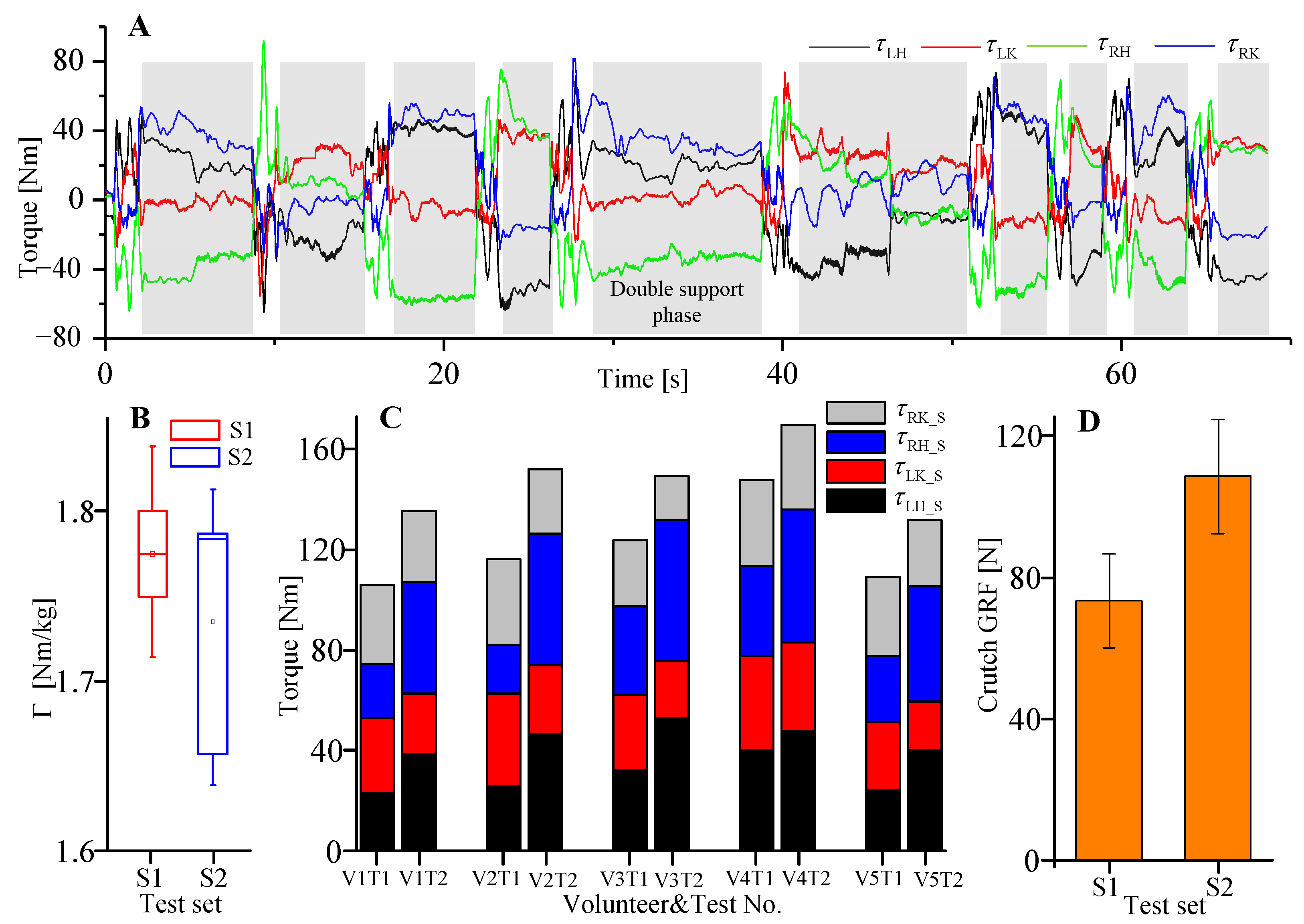
| i | ||||
|---|---|---|---|---|
| 1 | 0 | 0 | 0 | |
| 2 | 0 | 0 | ||
| 3 | 0 | 0 | ||
| 4 | 0 | 0 |
Publisher’s Note: MDPI stays neutral with regard to jurisdictional claims in published maps and institutional affiliations. |
© 2020 by the authors. Licensee MDPI, Basel, Switzerland. This article is an open access article distributed under the terms and conditions of the Creative Commons Attribution (CC BY) license (http://creativecommons.org/licenses/by/4.0/).
Share and Cite
Yang, W.; Zhang, J.; Zhang, S.; Yang, C. Lower Limb Exoskeleton Gait Planning Based on Crutch and Human-Machine Foot Combined Center of Pressure. Sensors 2020, 20, 7216. https://doi.org/10.3390/s20247216
Yang W, Zhang J, Zhang S, Yang C. Lower Limb Exoskeleton Gait Planning Based on Crutch and Human-Machine Foot Combined Center of Pressure. Sensors. 2020; 20(24):7216. https://doi.org/10.3390/s20247216
Chicago/Turabian StyleYang, Wei, Jiyu Zhang, Sheng Zhang, and Canjun Yang. 2020. "Lower Limb Exoskeleton Gait Planning Based on Crutch and Human-Machine Foot Combined Center of Pressure" Sensors 20, no. 24: 7216. https://doi.org/10.3390/s20247216
APA StyleYang, W., Zhang, J., Zhang, S., & Yang, C. (2020). Lower Limb Exoskeleton Gait Planning Based on Crutch and Human-Machine Foot Combined Center of Pressure. Sensors, 20(24), 7216. https://doi.org/10.3390/s20247216






